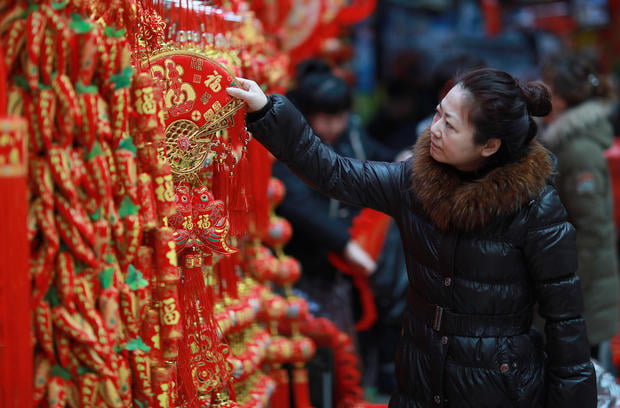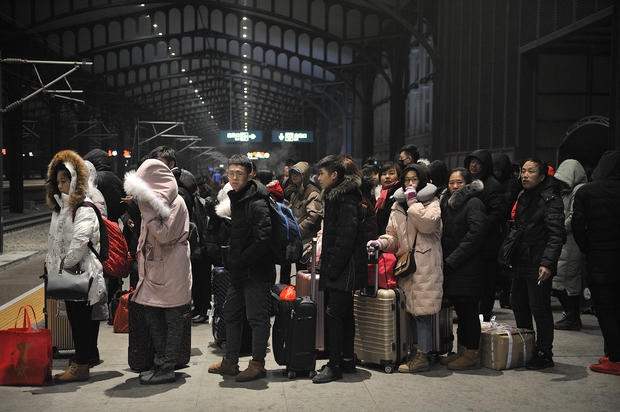World's largest seasonal human migration hits climax
Passengers gather in the waiting hall at Hongqiao Railway Station ahead of the Lunar New Year holidays in Shanghai, Feb. 6, 2018.
GETTY
BEIJING — Millions in China were boarding trains, planes and automobiles Wednesday as the Lunar New Year travel rush, the world’s largest seasonal human migration, reached its climax.
China’s most important festival falls on Friday and people were traveling to either return to their hometowns or flock to vacation destinations. For many migrant workers in the country’s industrialized east, the holiday may be the only time of year they return home to see family and friends.
Weeks before the rush, many travelers had used smartphone apps to snatch up tickets that later sold out. Some train journeys between cities and rural areas last more than 20 hours, with passengers crowded into cabins that are standing room only.

This photo taken on February 11, 2018 shows a customer selecting decorations at a market in Shenyang in China’s northeastern Liaoning province, ahead of the coming Lunar New Year, marking the Year of the Dog.
GETTY
The state railway operator reported Monday that 98.8 million people rode trains countrywide during the first 12 days of February. China’s official Xinhua news agency said more than 1.1 million were expected to pass through railway stations in Beijing on Tuesday and Wednesday alone.
Increasing numbers of Chinese have also been traveling abroad in recent years, reflecting rising prosperity among the urban middle class.
More than 6.5 million are expected to head overseas this year, according to a joint report from travel agency Ctrip and the China Tourism Academy.

People stand at Harbin Railway station to travel in Harbin of China on 13 February 2018.
GETTY
Travelers have booked voyages to more than 68 nations and regions, the report said, with Thailand, Japan, the United Arab Emirates and Nordic countries among the top destinations. The average Chinese tourist spends about 9,500 yuan ($1,500) on a Lunar New Year trip, the report said.
Domestic travel is also popular: the National Tourism Administration predicted earlier this month that this year’s holiday period will bring in 476 billion yuan ($75 billion) in tourism revenue.
© 2018 The Associated Press. All Rights Reserved. This material may not be published, broadcast, rewritten, or redistributed.





Leave a Reply